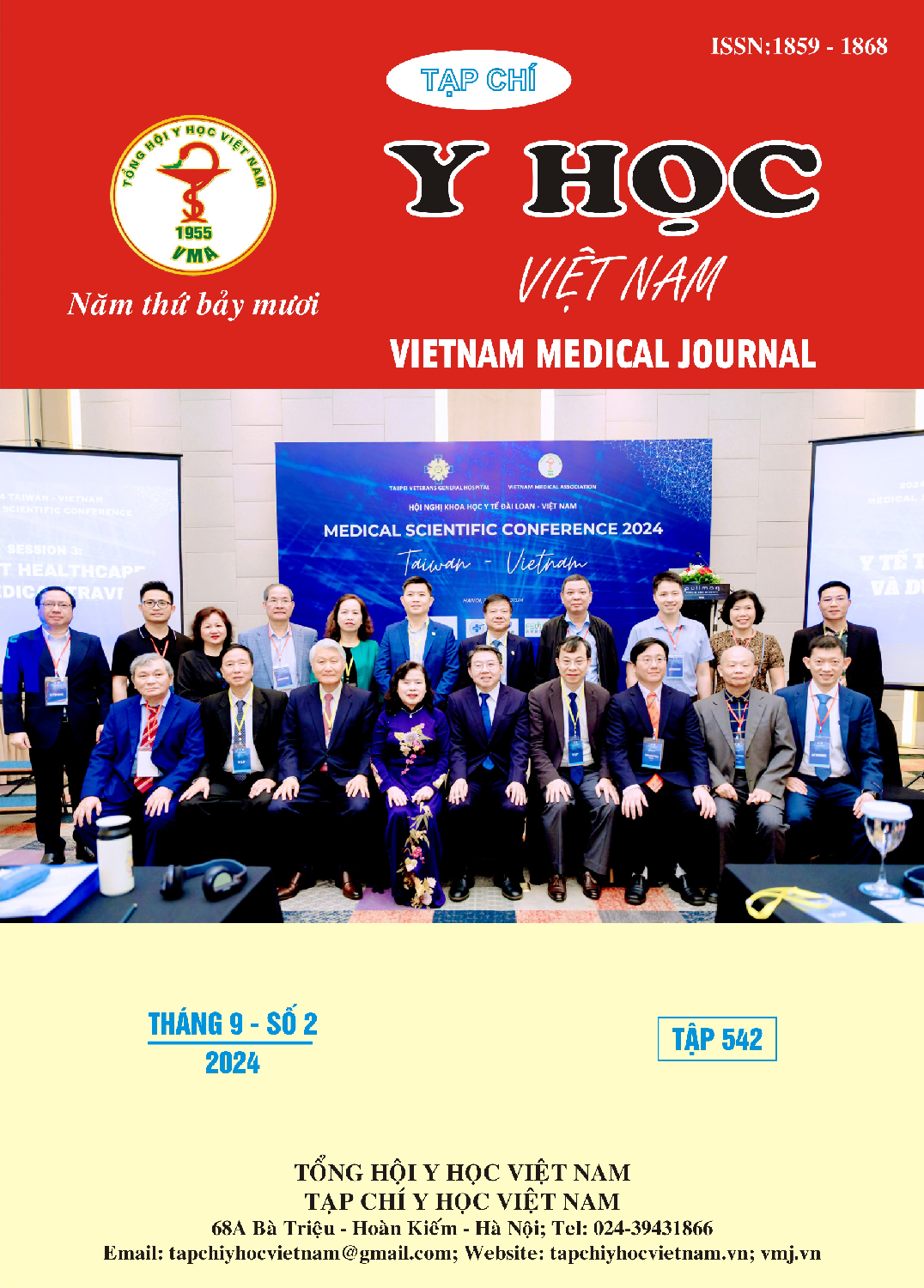EVALUATION OF OUTCOMES OF ELECTIVE CAESAREAN SECTION INTERVENTION IN PREGNANT WOMEN MANAGED AT CA MAU OBSTETRICS AND PEADIATRICS HOSPITAL YEAR 2023-2024
Main Article Content
Abstract
Objective: To evaluate the results of the reproductive health education and communication intervention on elective cesarean section in pregnant women in the first trimester at Ca Mau obstetrics and peadiatrics hospital year 2023-2024. Subjects and methods: Before-after intervention study on 295 pregnant women managed at Ca Mau obstetrics and peadiatrics hospital. Surveyed the rate of elective cesarean section, knowledge, and attitudes before and after the intervention. Results: After the intervention, the rate of elective cesarean section decreased from 36.95% before the intervention to 26.44% after the intervention, ARR=10.51 and NNT=9.51. The results also showed an increase in the rate of knowledge, correct attitudes after the intervention, correct knowledge increased from 29.83% to 37.63%; correct attitudes increased from 41.02% to 53.22%. Factors reducing the difference in elective cesarean section: urban residence, attitude, correct knowledge with OR were 0.31 CI95%[0.17-0.55]; 0.22 CI95%[0.13-0.39] và 0.51 CI 95%[0.31-0.83] respectively, the factors increasing the difference were older pregnant women, high income, previous cesarean section with OR were 1.44 CI95%[1.12-1.85]; 1.57 CI95%[1.14-2.17] and 6.01 CI95%[3.69-9.78]. Conclusion: Reproductive health education and communication intervention measures reduce the rate of elective cesarean section, increase the rate of pregnant women with correct knowledge and attitudes.
Article Details
References
2. Chen I, Opiyo N, Tavender E, Mortazhejri S, Rader T, Petkovic J, et al (2018), “Non-clinical interventions for reducing unnecessary caesarean section”, Cochrane Database Syst Rev, doi.org/10.1002/14651858.
3. Farideh Moradi, Aidin Aryankhesal, Mohammad Heidari, Ali Soroush (2019), “Interventions in Reducing Caesarean Section in the World: A Systematic Review”, Malays J Med Sci, 26(5); pp: 21–37.
4. Mahboubeh Shirzad, (2020), “Effect of “motivational interviewing” and “information, motivation, and behavioral skills” counseling interventions on choosing the mode of delivery in pregnant women: a study protocol for a randomized controlled trial”, Trial, 21, e:970.
5. Sedigheh Sheidaei, Jafarnejad F, Mohammad Zadeh F, Taji Heravi A (2019), “The Effect of Peer Education on Pregnant Women's Choosing Mode of Delivery”, Journal of Midwifery and Reproductive Health, 7(4); pp: 1880-1887.
6. WHO (2018) “Recommendations non-clinical interventions to reduce unnecessary caesarean sections”, ISBN 978-92-4-155033-8.
7. Yunhui Tang, et al (2020), “Promotion of Pre-natal Education Courses Is associated With Reducing the Rates of Caesarean Section: A Case-Control Study”, Public Health, doi: 10.3389/fpubh.666337.


